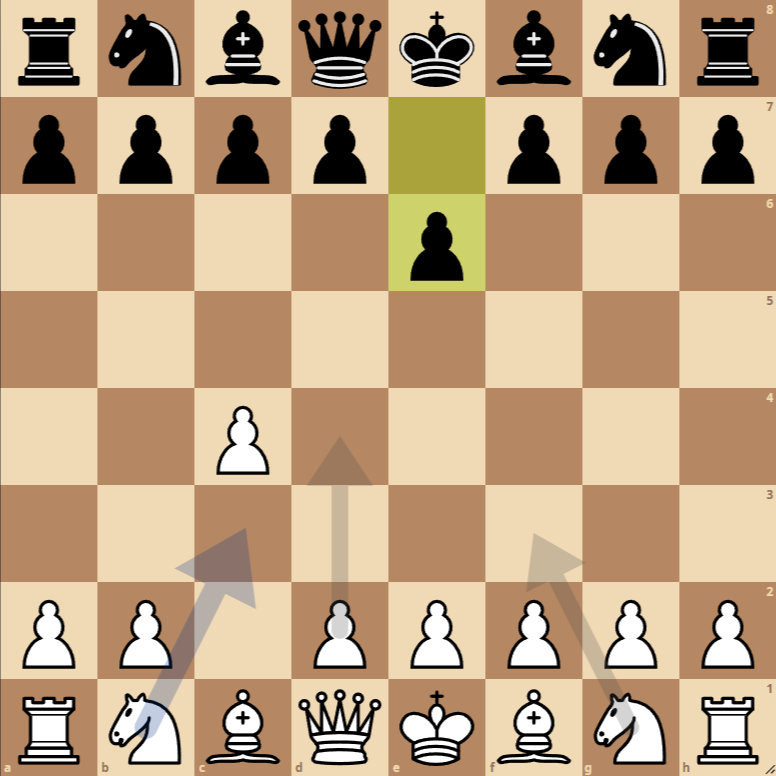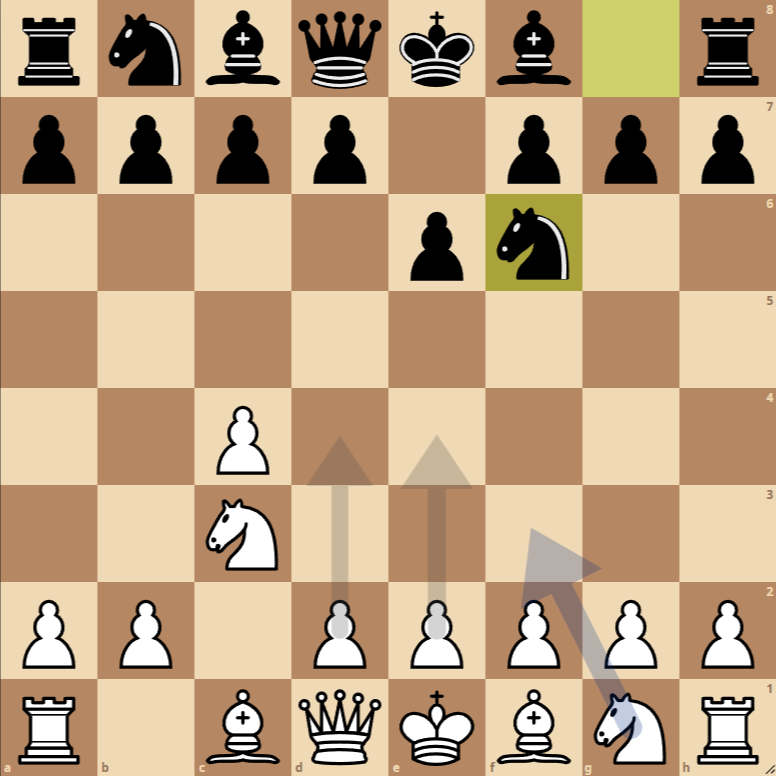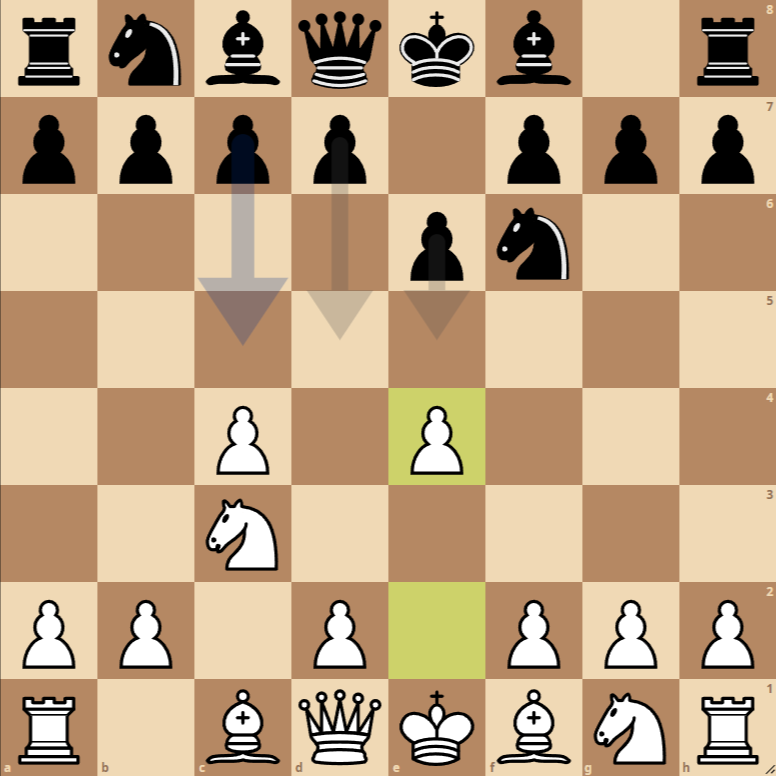How to Play the English Opening: Mikenas-Carls Variation


- 1. c4: White’s first move, c4, aims to control the center of the board from the flank. It’s characteristic of the English Opening and sets the stage for flexible piece development.
- 1… e6: Black responds with e6, a move that supports their queen and prepares the possibility of advancing the d-pawn to d5, thus controlling the center.
- 2. Nc3: Developing the knight to c3, White reinforces their control over the center and prepares the pawn structure for a possible central advance with e4.
- 2… Nf6: Black develops their knight to f6, a classic move to pressure the center and prepare for a potential attack or defense against e4.
- 3. e4: White advances e4, establishing strong central control. This move challenges Black to respond and defines the aggressive nature of the Mikenas-Carls Variation.
- 3… c5: A central counterattack by Black. This move challenges White’s pawn structure and opens lines for the development of other pieces, especially the bishop on g7.
Variations of the English Opening: Mikenas-Carls Variation
1… d5
A variation that directly challenges the pawn on c4. It leads to an open and symmetrical game, where both players vie for control of the center from the start.
2… d5
A more direct approach after 2. Nc3, aiming to open the center quickly. This line can lead to early exchanges and an intense struggle for initiative in the middle game.
3… d5
An aggressive response to 3. e4, challenging White’s center. This variation can lead to complex pawn structures and dynamic play with opportunities for both sides.

